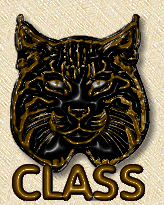|
Bengal
Temperament:
*Elegantly Conservative
*Agile and Alert
*Affectionate
*Playful
*Independent
*Natural Hunter
"Outgoing, curious, confident and athletic, the Bengal is a playful
pet."
|
| Head: Long
with modified wedge; short nose |
| Eyes: Round,
large; yellow, gold, or hazel |
| Ears: Small
to medium; round tipped |
| Body: Large,
powerful, muscular; longer back legs, large feet |
| Coat: Short
to medium; thick, soft, and characteristically spotted |
| Tail: Long,
not spotted |
| Patterns: Dark
spots on a reddish background color; leopard, marble, snow leopard, sorrel,
snow marble, mink |
Breed History: Picture
a leopard stalking through the jungle, then picture a smaller version stalking
through a suburban back yard- and you will be imagining the Bengal. The Bengal
looks like a small leopard for a good reason. The breed originated from a
cross between a wild Asian Leopard Cat and a domestic cat. Hybrids of wild and
domestic cats have occurred for over a hundred years, but it wasn't until the
late 1970's that the exotic looking Bengal came into being.
Hoping to reproduce the distinctive spotted pattern, colors, and facial
features of the Asian Leopard Cat in a domestic cat, California breeder Jean
Mill obtained eight females- the offspring of leopard cats and domestic
shorthairs- from a University of California geneticist and mated them with a
male from an Indian zoo and another domestic cat from a Los Angeles Humane
Shelter. Unlike most other hybrids, the offspring of this cross were fertile.
Thus, the new breed was born.
The extreme rarity and unique "wild" characteristics of the early
Bengals made them very expensive- one English owner was offered 12,000 pounds
for one of them! Now, however, many breeding programs have brought the number
of Bengals up and the price of them down.
Originally called the "Leopardette",
this heavily muscled cat may look like its wild ancestors but is completely
domesticated. Unlike other cats, it loves water. In fact, some Bengals have
been known to jump in the shower or bath with its owners.
|
| Additional Notes: |
|

|
|

|
|

|

|

|
|